How Hershey Makes Masks
Ever wonder how disposable face masks get made? Recently, NAM staff photographer David Bohrer visited a Hershey facility in Pennsylvania where workers are making masks for local schools, food banks, homeless shelters and more—producing about 60,000 per month for donation. They gave him the full tour, where he snapped these mask-makers in action.
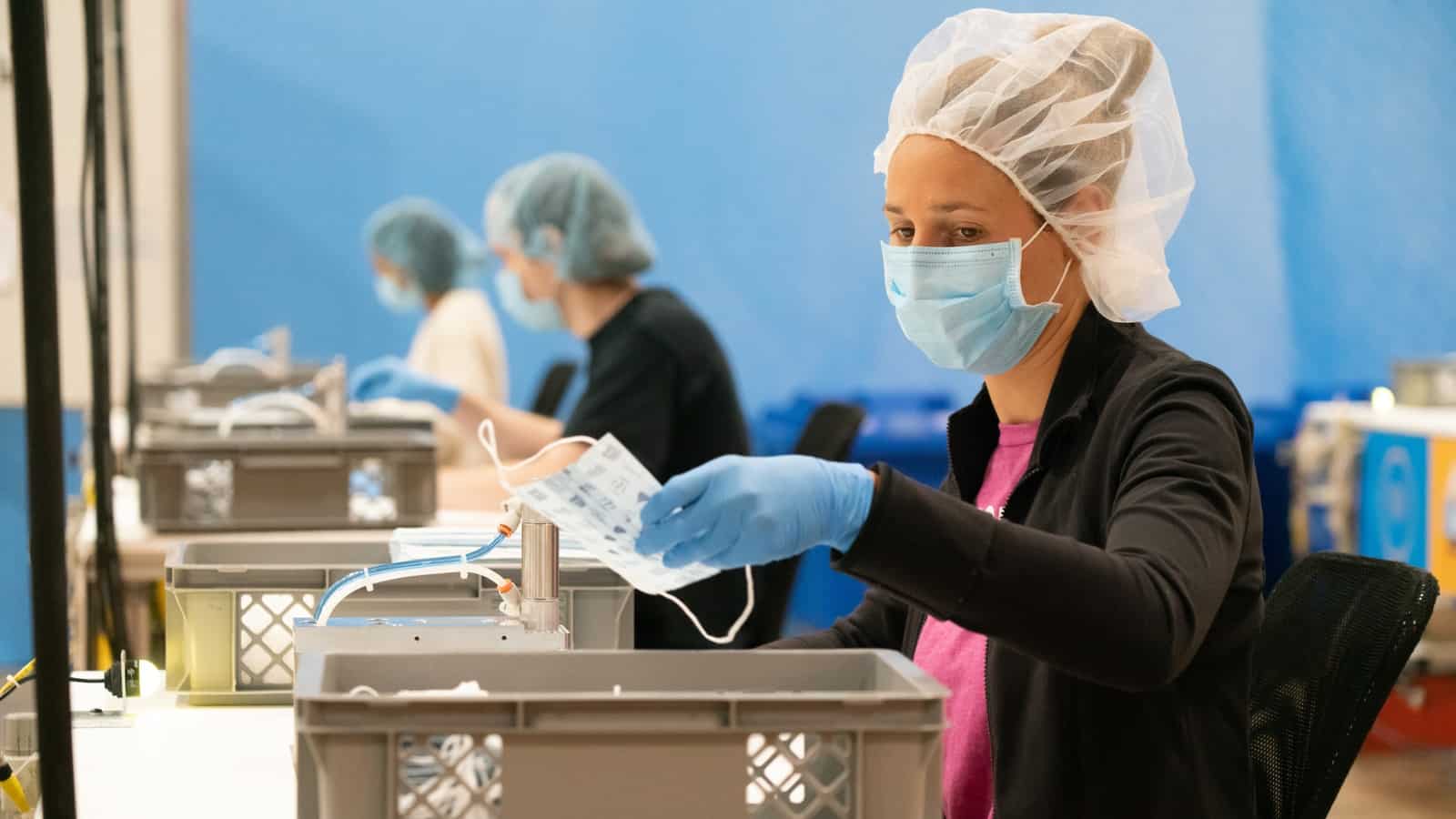
Here’s how they do it. First, workers combine three layers of nonwoven fabric into one large piece. Why three? Because you need a layer on both sides of the electrostatic filter to protect it.
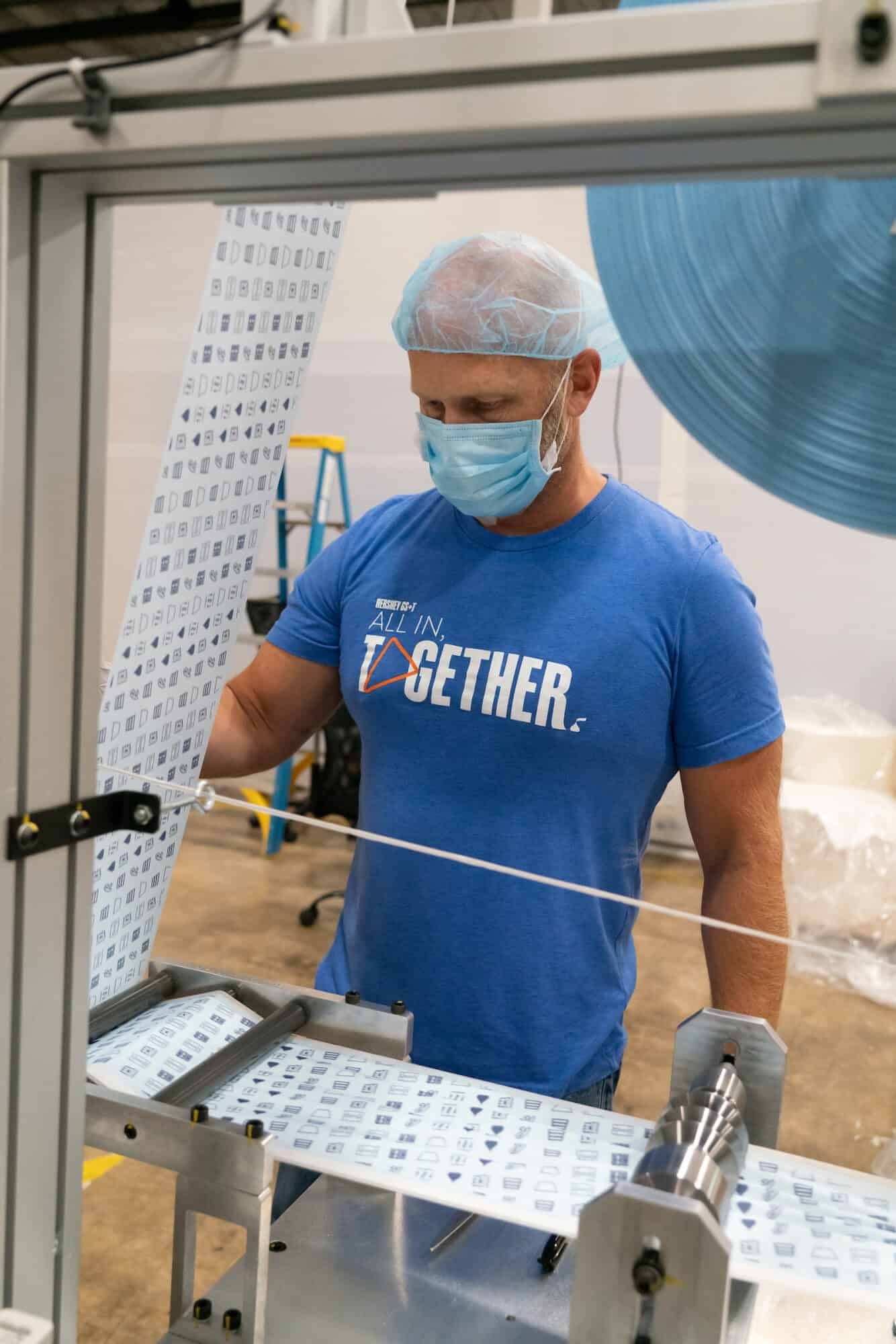
(The candy pattern adds style to safety.)
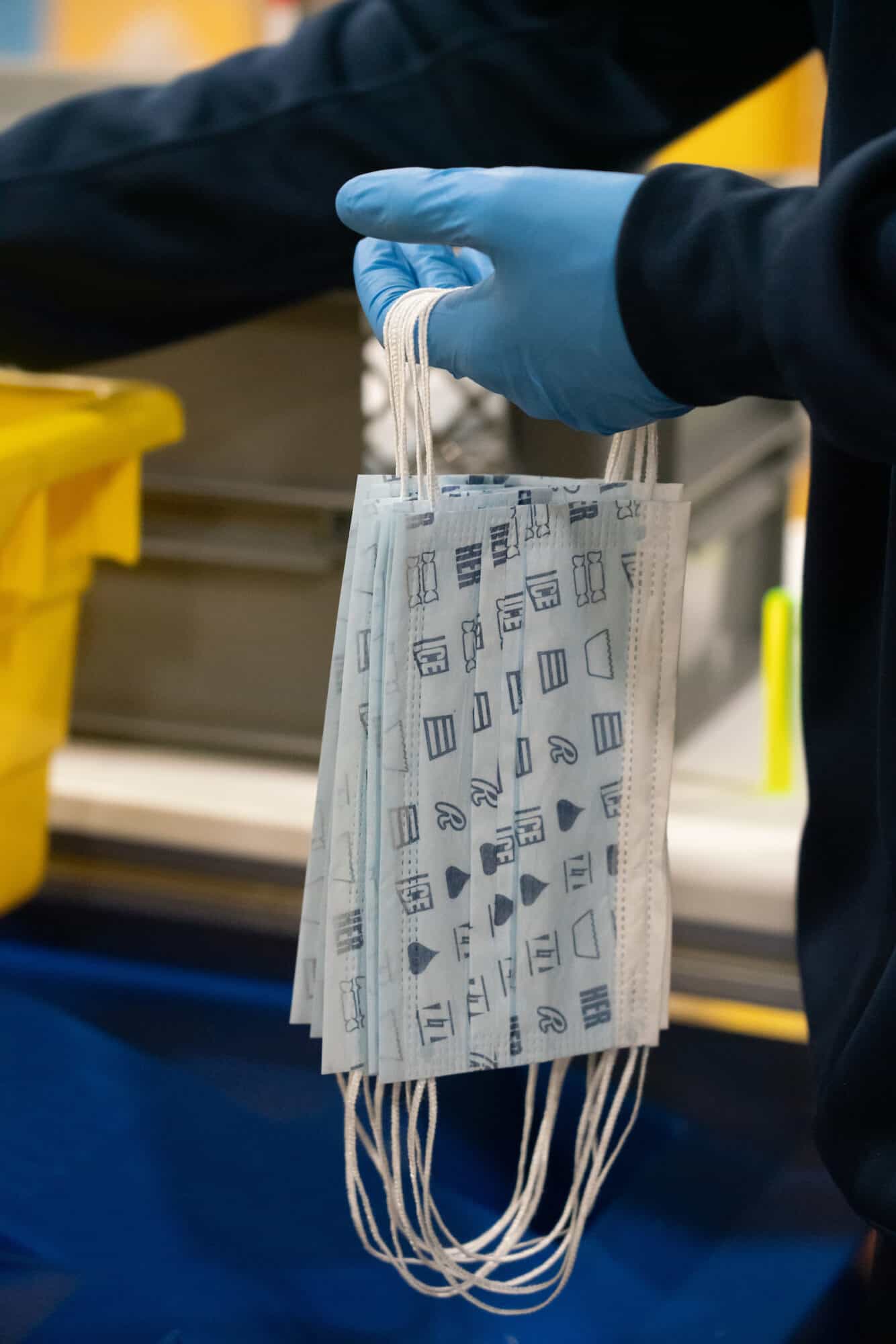
Then workers pleat the fabric and insert the nose bridge. The outer edges get folded and sonic welded. And only then do you cut out individual masks from the three-layer fabric.
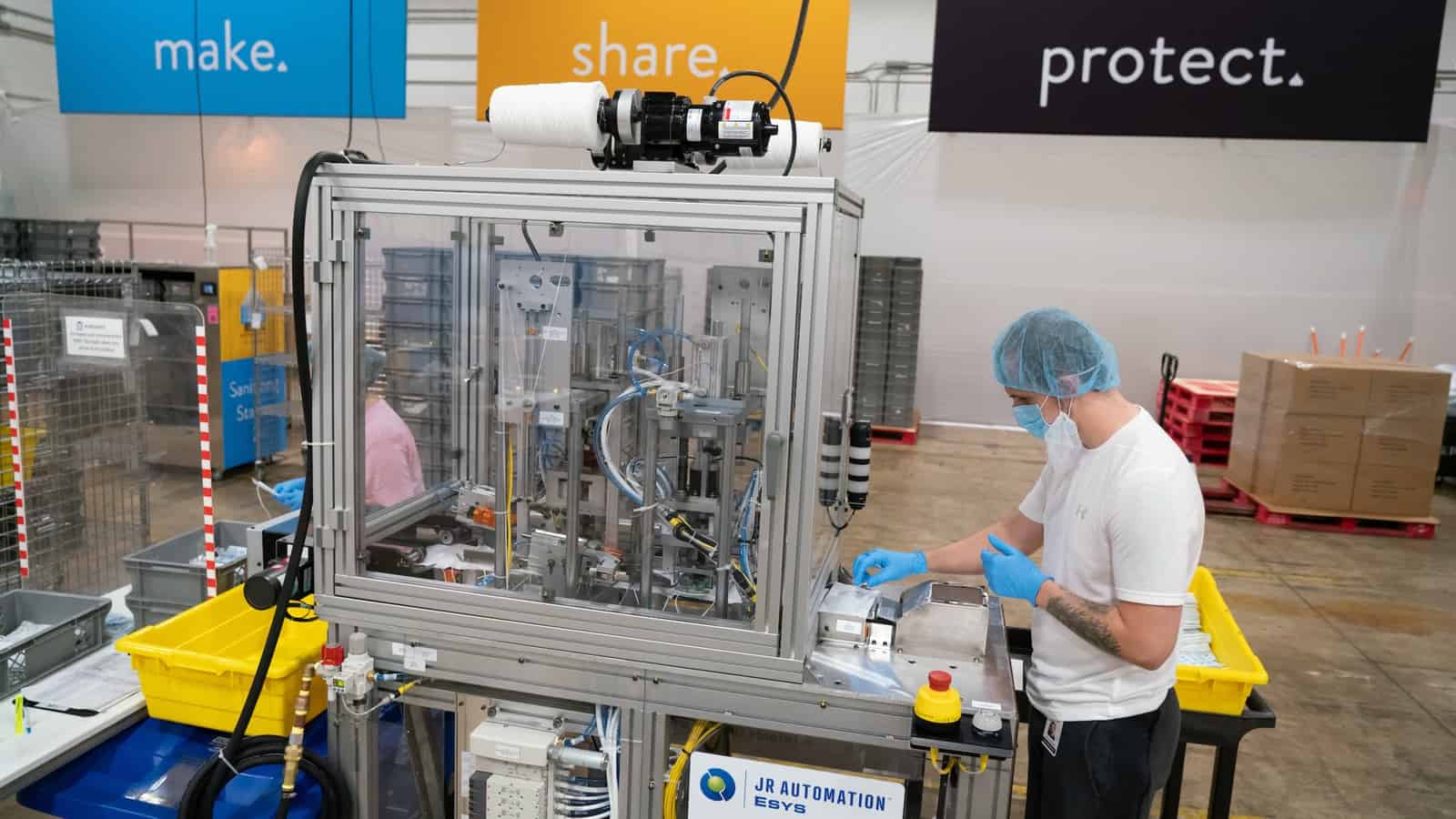
After the individual masks are cut, workers inspect each mask by hand.
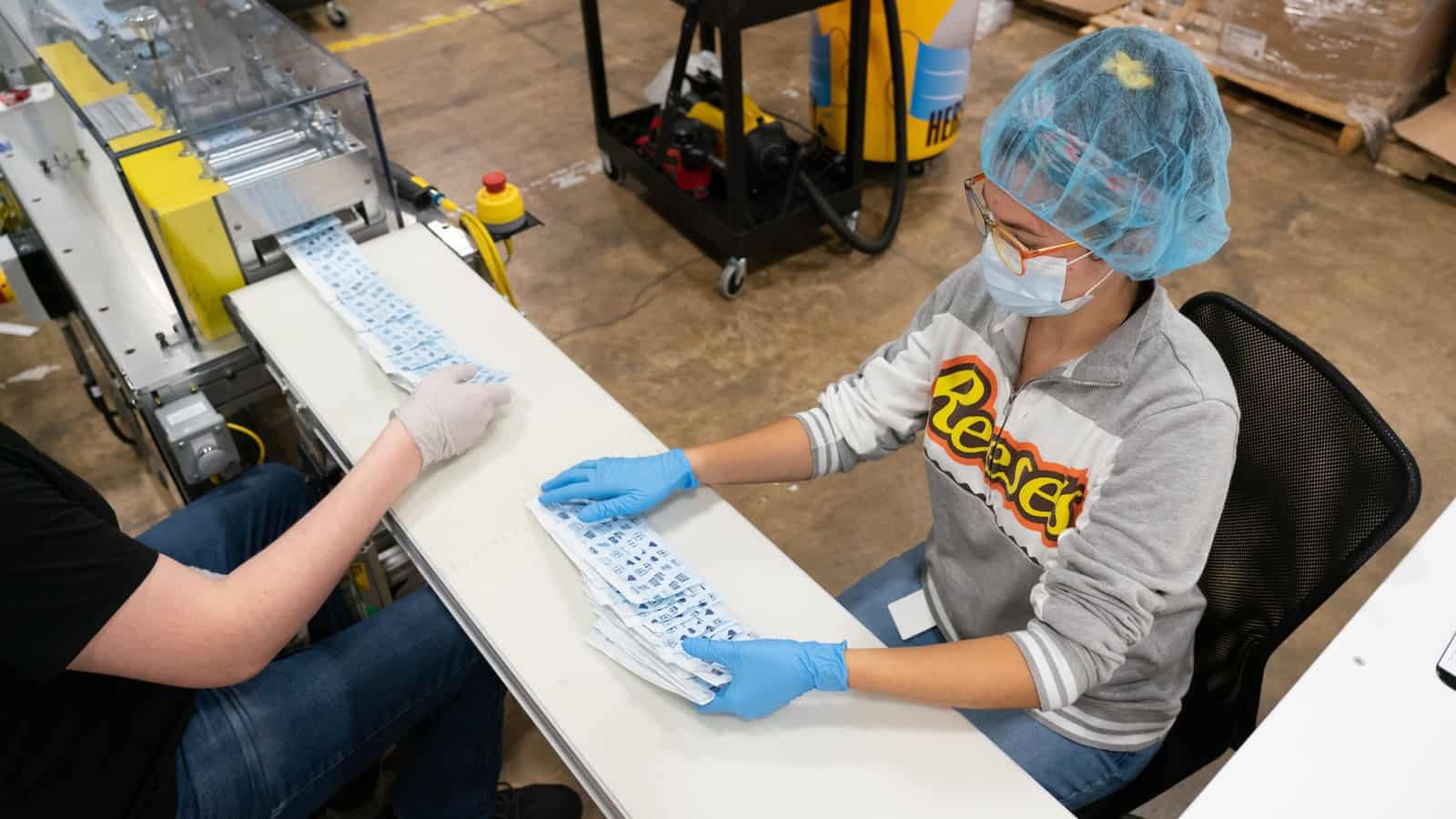
Next, they use a machine to sonic weld the ear loops to the masks. When Hershey started making masks, workers did this by hand, but it later purchased a machine that speeds this process up. In the middle of a pandemic, every second counts.
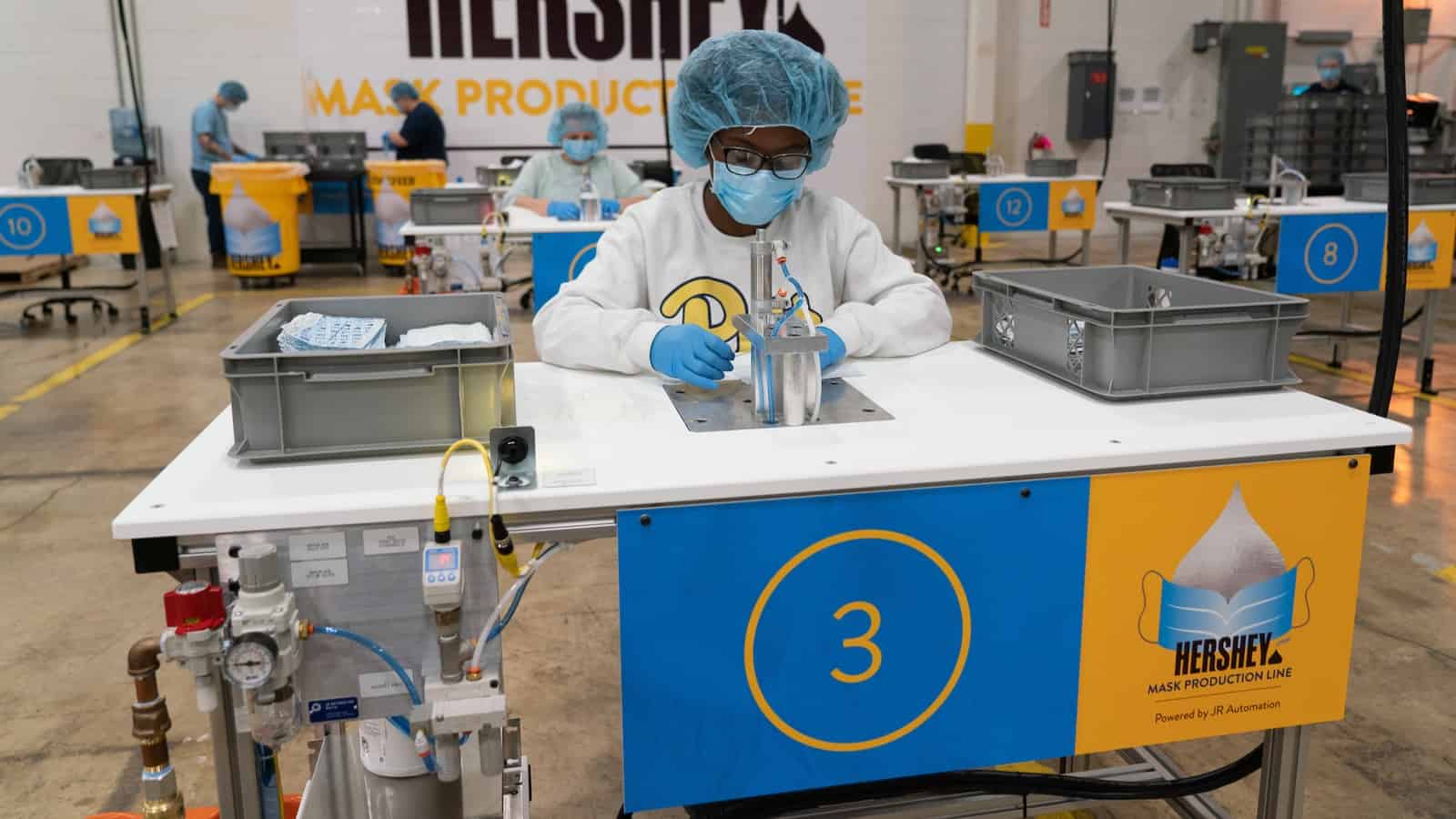
Lastly, the masks get sterilized, bagged, labeled with a date and lot code and sent on their way.
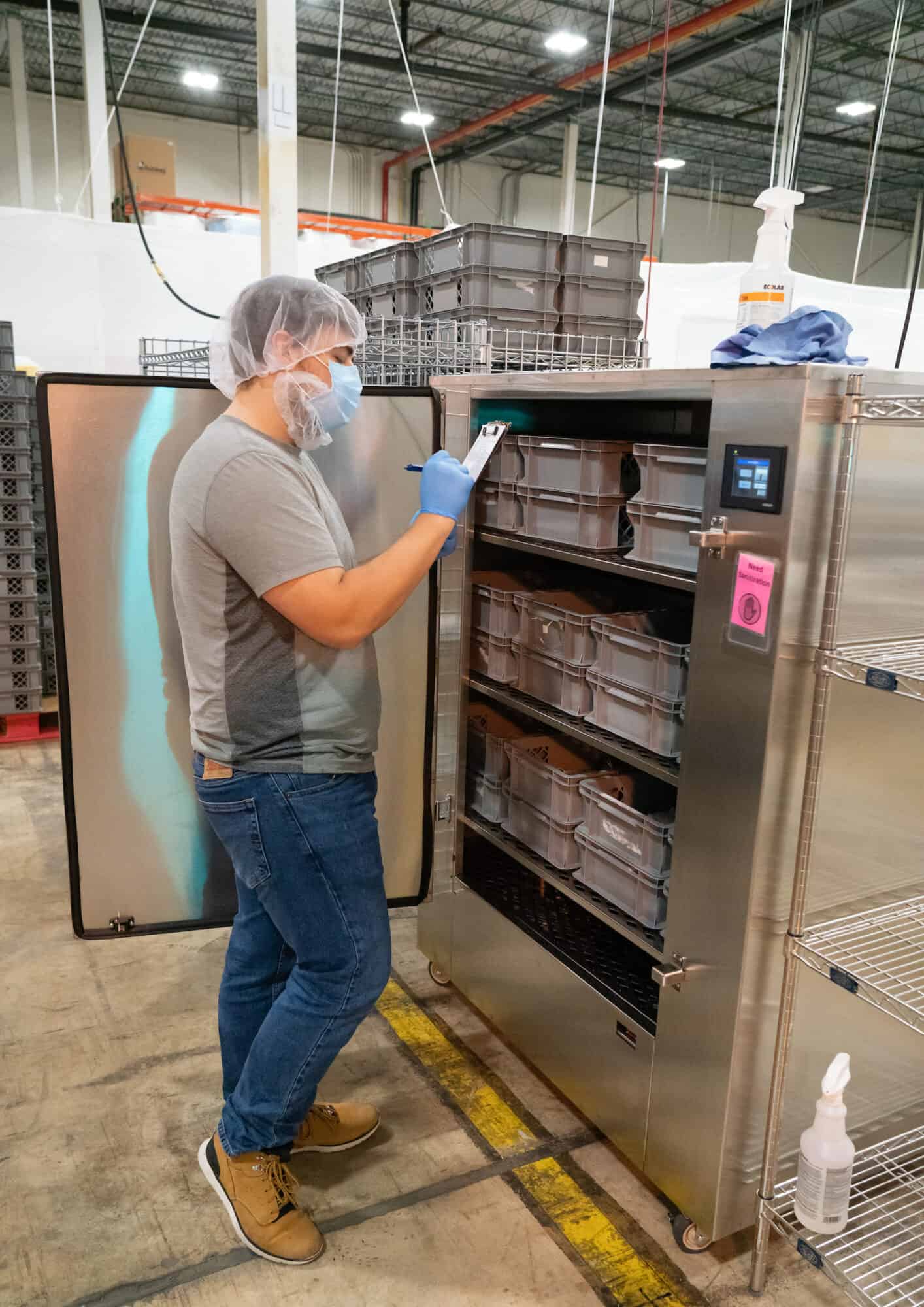
To date, Hershey has donated more than 440,000 masks to more than 65 community organizations and nearly two dozen public school districts in central Pennsylvania.
“PPE is critical to our daily operations, and when acquiring masks became challenging earlier this year, we quickly pivoted and made the decision to buy our own equipment to make masks,” Hershey Vice President of International Supply Chain & Manufacturing Will Bonifant says. “Sharing our masks with our employees’ families and the broader community was just a natural extension of how we’ve always supported the communities in which we live and work.”
